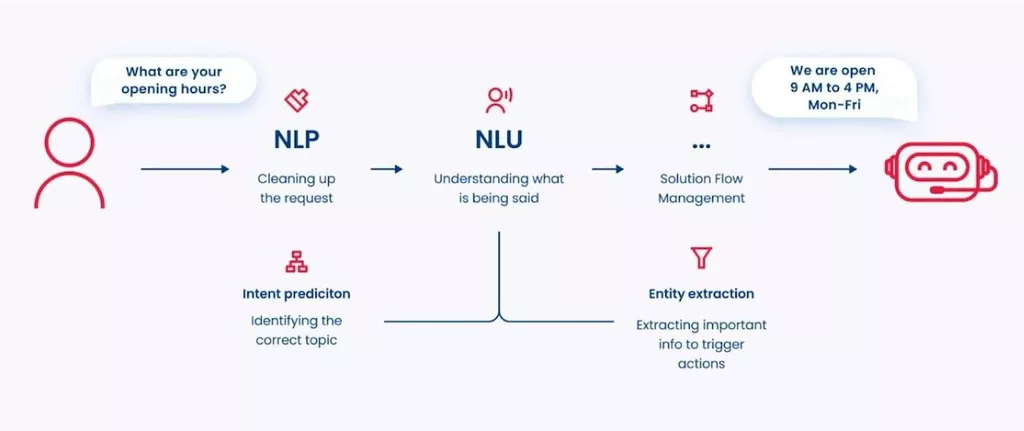With superior OCR capabilities like intelligent character recognition, these instruments can deal with advanced layouts and fonts, making them much more versatile. The OCR system identifies and extracts characters from the picture throughout textual content recognition. Advanced systems also use machine learning and clever character recognition (ICR). These tools assist adapt to numerous fonts and writing types, which boosts accuracy. Automate document processing with superior instruments like Adobe Signal and DocuSign integrated into your workflows.

OCR tools simplify beforehand guide and time-consuming duties by changing scanned paperwork into digital textual content. This know-how is valuable for libraries, archives, and business operations. OCR capabilities streamline workflows and enhance effectivity in plenty of areas.

These tendencies point out a bright future for optical character recognition technology, with continued innovation driving improvements in accuracy, efficiency, and value. As OCR capabilities evolve, they will play an increasingly integral role in digitizing information, automating processes, and enhancing accessibility in our interconnected world. OCR algorithms rely heavily on image quality for accurate text recognition.
Handwritten Text Recognition
In this weblog, we delve into OCR, unraveling its mechanisms, exploring its applications, and understanding its implications in our every day lives. Optical character recognition (OCR) is a know-how that extracts text from pictures, scanned paperwork or other visual formats and converts it into machine-readable, editable text. At its core, OCR allows software to “read” printed or handwritten textual content in the identical means a human would, by identifying characters and reconstructing them into meaningful buildings.
One of the numerous challenges confronted by OCR methods is accurately recognizing handwritten textual content. Handwriting kinds can differ greatly, starting from neat and legible to messy and illegible. This variability makes it difficult for OCR algorithms to precisely decipher handwritten characters, resulting in errors in textual content recognition. While Exploring Optical Character Recognition some OCR tools supply handwriting recognition features, their accuracy should be restricted, especially for cursive or poorly written textual content.
- Many fashionable techniques use a mixture of those strategies to enhance total efficiency and flexibility.
- Optical character recognition (OCR) technology serves because the bridge between bodily documents and digital information, enabling machines to “read” and interpret text.
- Optical character recognition (OCR) is a broadly used technology that enables the conversion of text from images, scanned paperwork or photographs into machine-readable and editable information.
- However, accuracy improves with high-quality picture recordsdata and superior OCR tools.
Nonetheless, ICR (Intelligent Character Recognition) is a complicated form of OCR. It can acknowledge handwritten text and adapt to totally different handwriting styles. Each of these OCR varieties serves particular functions and is suited to specific document varieties and processing necessities. Many modern techniques use a mixture of these strategies to enhance overall performance and adaptability. Another advantage of synthetic knowledge generation is the ability to regulate the granularity and format of the labels, together with different colours, font, font sizes, background noise, and so on. This allows us to design architectures that can acknowledge punctuation, layout, handwritten characters and form parts.
A Quantity Of advantages and downsides come with OCR; these vary from how agile or accurate it can be, amongst others. Doc processing is crucial and is one required step to prevent the onset of safety issues. Remember that firm knowledge is confidential, and any risk to this privacy could hurt a company’s brand name and buyer loyalty. MainMicro saves 1000’s of hours every month with Wrk’s OCR + AI automation to streamline their accounts payable processes.
The utility of OCR extends beyond its purposes in various domains, from document digitization to textual content extraction in photographs. Eliminating guide labor helps introduce proper knowledge automation into related companies. Due To This Fact, by turning to them, companies will outplay their rivals within their business stage.
In Style Ocr Tools For Individuals And Companies
Managing enterprise data effectively and securely is crucial as company data is delicate. Document processing entails getting knowledge, storing, and retrieving all pertinent documents and data of business. Optical character recognition works by way of a series of steps, which take a scan of the original doc and turn it right into a digital file or PDF that you could edit. Right Here, the OCR engine corrects errors by way of methods like de-skewing, binarization, zoning and normalization to improve the accuracy of scanned images.
The switch of data from web crawlers and bot searches are carried out for transferring relevant databases. This is probably the most appropriate methodology for collecting extremely variable data like stock prices. Internet scraping fulfills specific data wants, routinely extracting structured information instantly from websites. Harness the facility of a unified content material, course of and application intelligence platform to unlock the value of enterprise content. With the assistance of AI and automation, Wrk fully automates work order consumption https://www.globalcloudteam.com/ and vendor project, mechanically distributing orders based mostly on request kind and urgency. Our Wrkflow totally automates payment verification, processing, and observe ups leveraging integrations with Slack, Stripe, and inside tooling.
OCR and ICR convert bodily text into digital codecs however have distinct OCR capabilities. OCR expertise is broadly utilized in healthcare, finance, and office tasks. By Way Of OCR techniques Warehouse Automation and clever character recognition, physical textual content is made accessible digitally. Though OCR instruments typically accommodate a broad spectrum of languages, they might encounter difficulties in accurately recognizing less prevalent languages or dialects.
Optical character recognition (OCR) is a know-how that recognizes textual content in a digital document, similar to an image or scanned doc, by translating it into a machine-readable format. With hardware scanners and superior software, OCR works by identifying letters and then rebuilding the letters into words and sentences using code. An everyday function of OCR is scanning receipts and business contracts.
